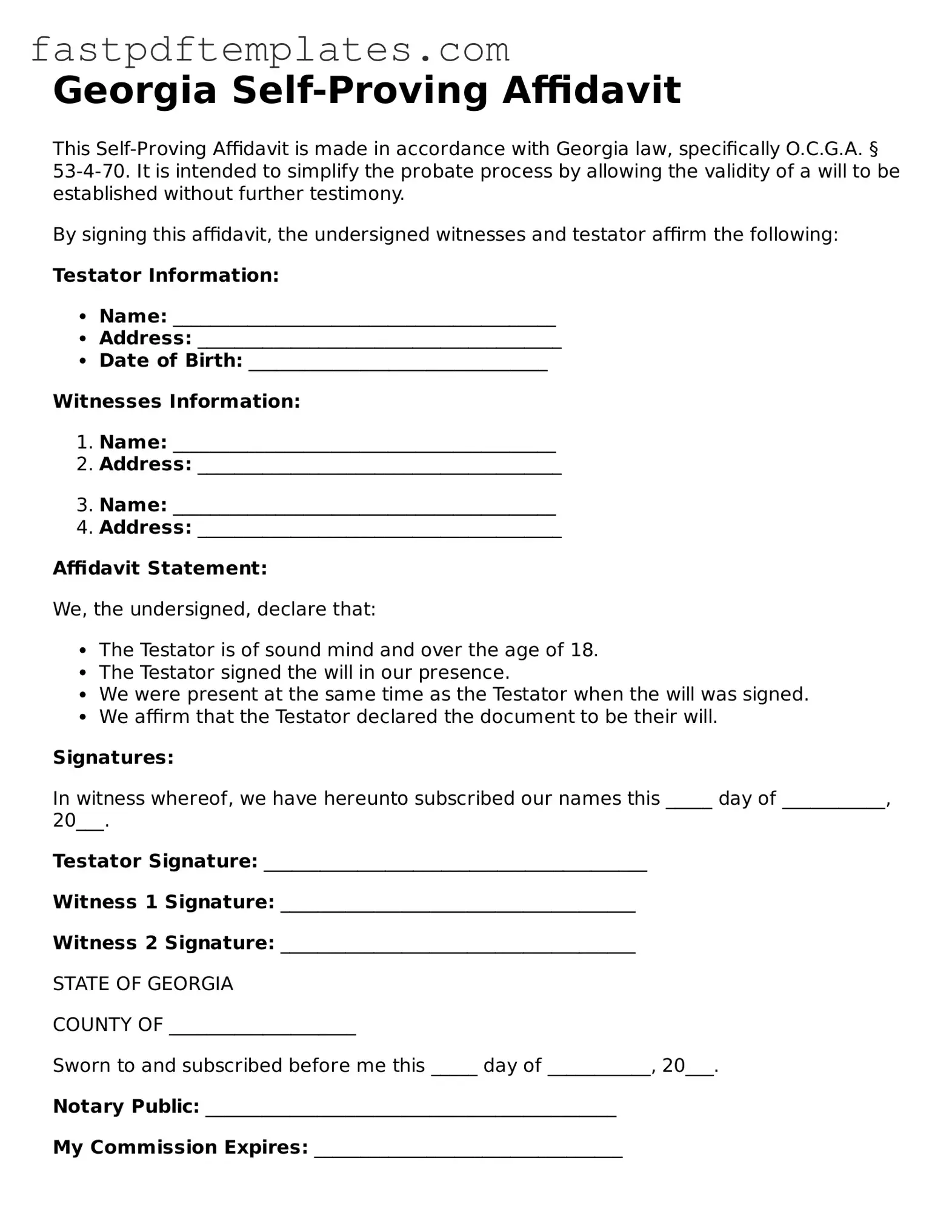Georgia Self-Proving Affidavit
This Self-Proving Affidavit is made in accordance with Georgia law, specifically O.C.G.A. § 53-4-70. It is intended to simplify the probate process by allowing the validity of a will to be established without further testimony.
By signing this affidavit, the undersigned witnesses and testator affirm the following:
Testator Information:
- Name: _________________________________________
- Address: _______________________________________
- Date of Birth: ________________________________
Witnesses Information:
- Name: _________________________________________
- Address: _______________________________________
- Name: _________________________________________
- Address: _______________________________________
Affidavit Statement:
We, the undersigned, declare that:
- The Testator is of sound mind and over the age of 18.
- The Testator signed the will in our presence.
- We were present at the same time as the Testator when the will was signed.
- We affirm that the Testator declared the document to be their will.
Signatures:
In witness whereof, we have hereunto subscribed our names this _____ day of ___________, 20___.
Testator Signature: _________________________________________
Witness 1 Signature: ______________________________________
Witness 2 Signature: ______________________________________
STATE OF GEORGIA
COUNTY OF ____________________
Sworn to and subscribed before me this _____ day of ___________, 20___.
Notary Public: ____________________________________________
My Commission Expires: _________________________________
